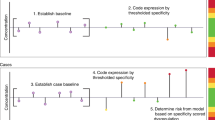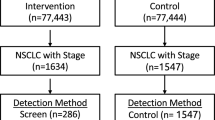Abstract
Misclassification of the oestrogen status of a human breast tumour cytosol, arising from different sources and magnitudes of error in the dextran-coated charcoal (DCC) method, have been investigated using both practical and computer simulated data analysed by Scatchard and Mass Action models. The minimum detectable receptor site concentration, relative or absolute numerical bias and imprecision which are complex and integral functions of misclassification, have been calculated from practical data and for a range of experimental conditions likely to be encountered in practice. The Mass Action model was found to be superior and the computer program, designed to investigate the effects of methodological errors on quantitative aspects of the assay, may be a useful aid for analytical design and internal quality control of the receptor assay.
This is a preview of subscription content, access via your institution
Access options
Subscribe to this journal
Receive 24 print issues and online access
$259.00 per year
only $10.79 per issue
Buy this article
- Purchase on Springer Link
- Instant access to full article PDF
Prices may be subject to local taxes which are calculated during checkout
Similar content being viewed by others
Rights and permissions
About this article
Cite this article
Wilson, D., Richards, G., Nicholson, R. et al. Quantitative aspects of the E2 receptor assay for human breast tumour cytosol using dextran-coated charcoal. Br J Cancer 50, 493–499 (1984). https://doi.org/10.1038/bjc.1984.206
Issue Date:
DOI: https://doi.org/10.1038/bjc.1984.206



